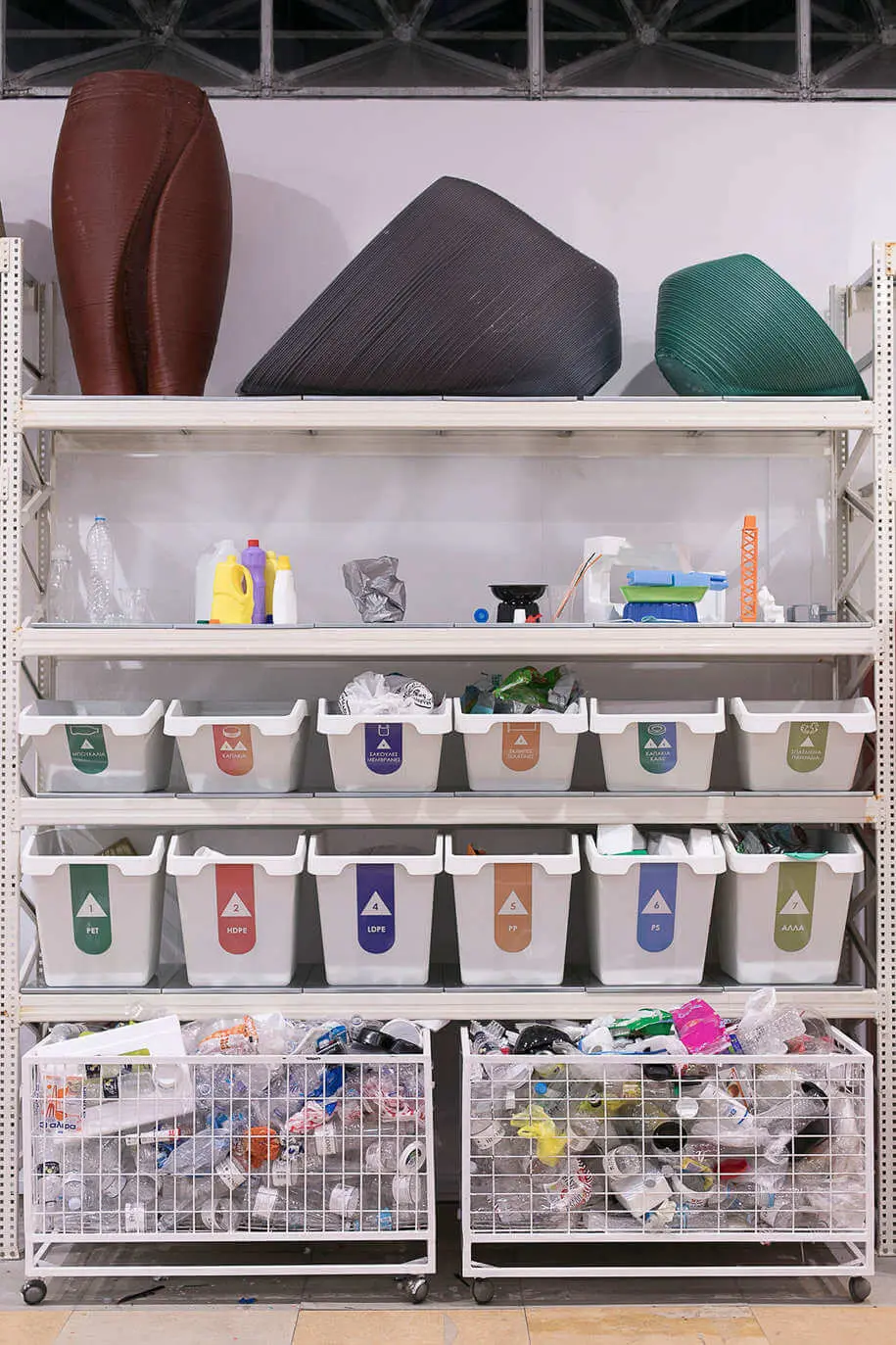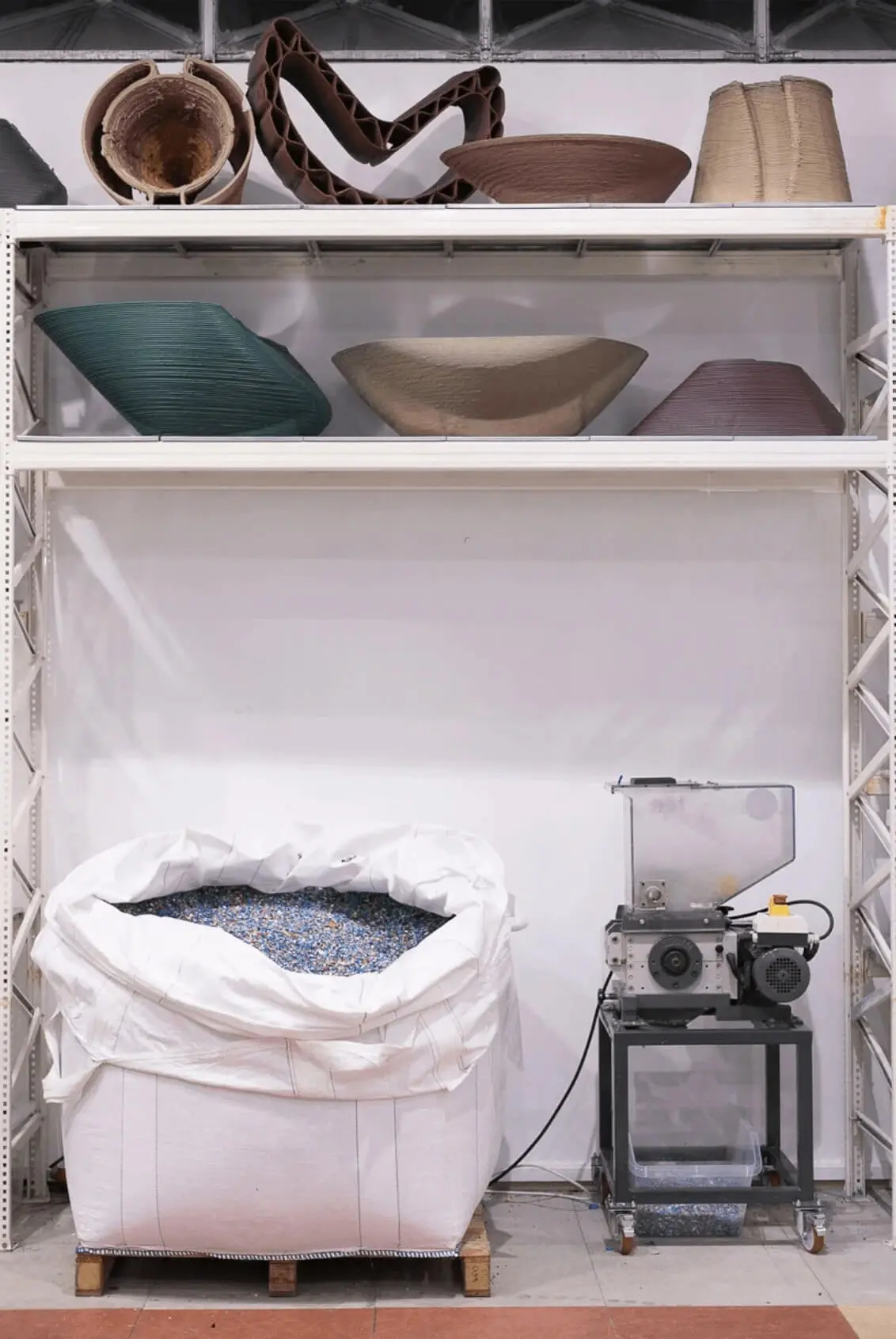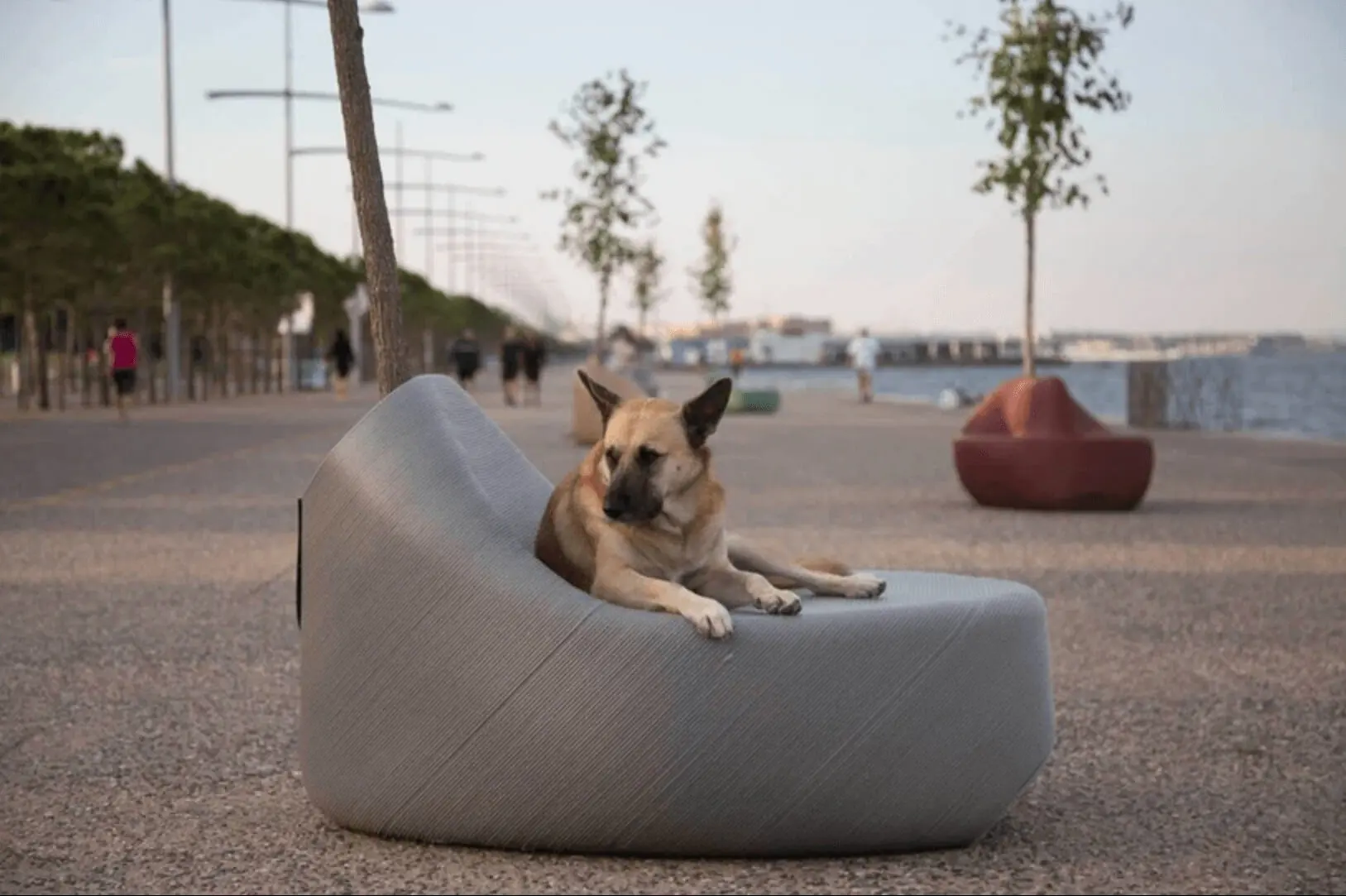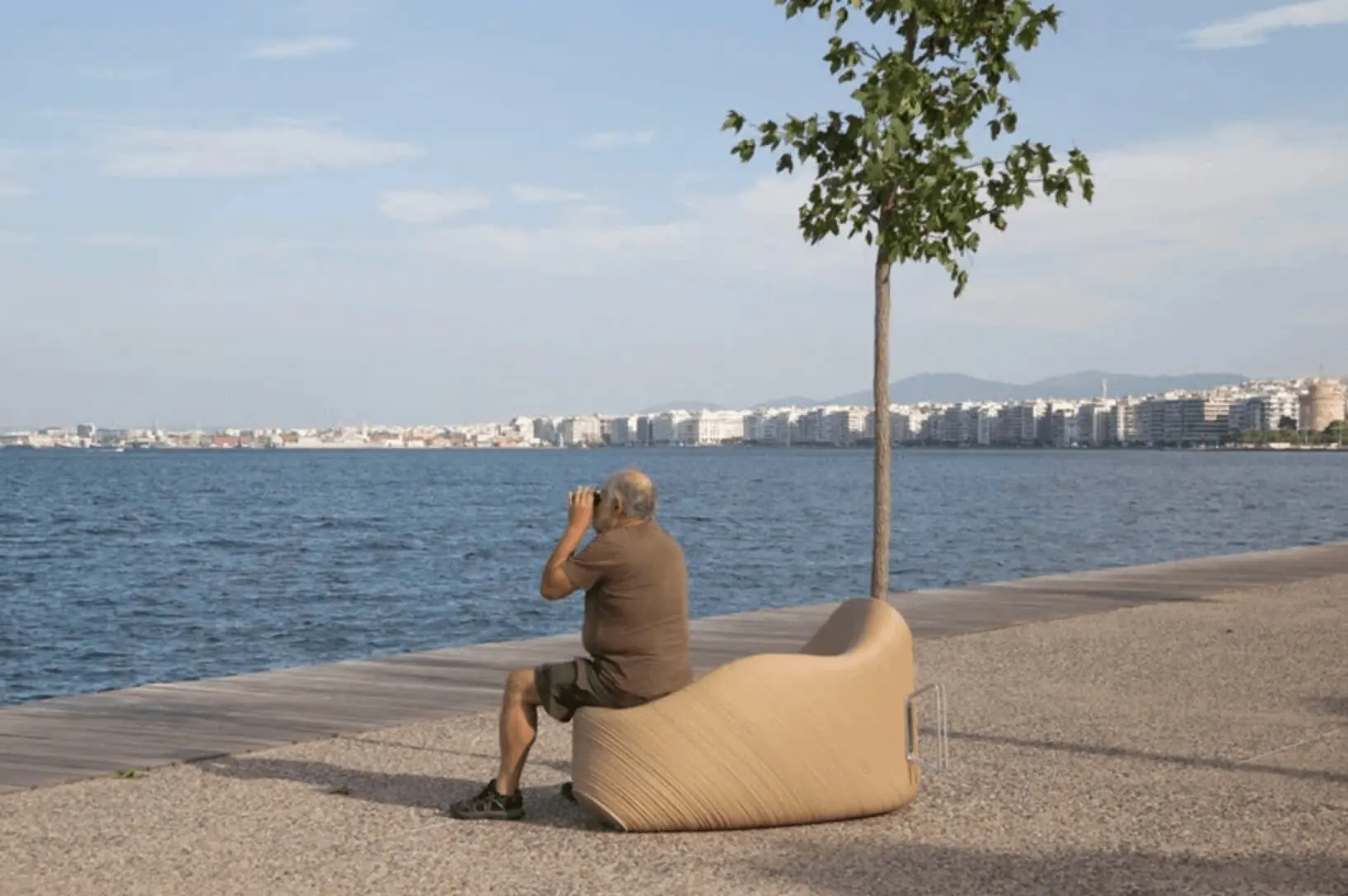How plastic waste can be transformed into meaningful urban products
Part of Coca-Cola’s “Zero Waste Future” program, Zero Waste Lab is an initiative with the aim to reduce the amount of plastic waste and create with it a more sustainable future.
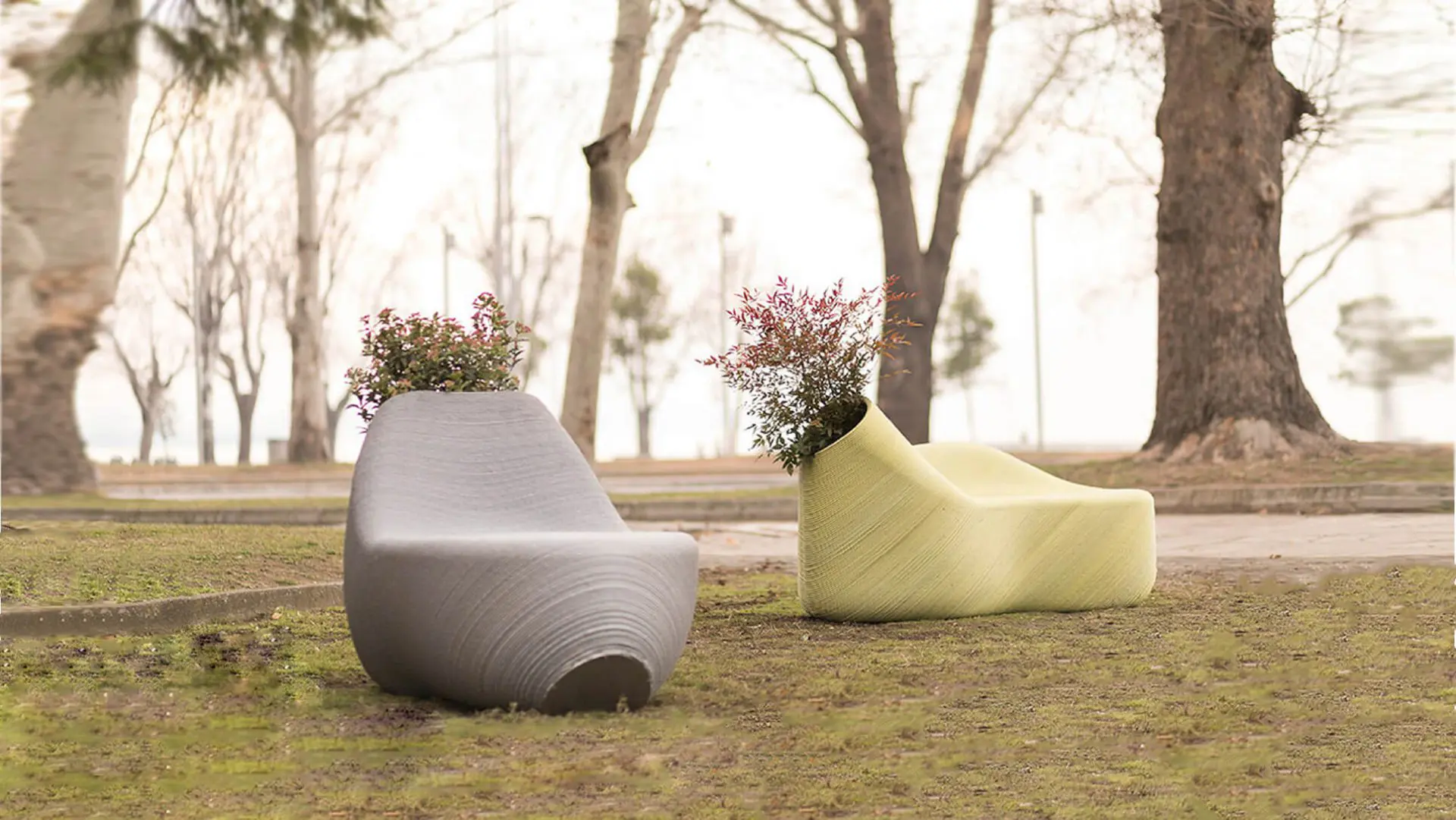
Chosen as the first pilot city, Zero Waste Lab set camp in Thessaloniki, Greece, and partnered up with research and design studio, The New Raw, to carry out this initiative that not only achieves a sustainable solution but involves residents of the city in the process.
With the use of a robotic arm, Zero Waste Lab explores how plastic waste can be transformed into meaningful and useful products for public spaces. The involvement of the citizens of Thessaloniki allows for communities to join, contribute and design together furniture that will help beautify the city while reducing the amount of waste generated, adding another layer to this thoughtful initiative.
By creating a synergetic process, Zero Waste Lab project is raising awareness, educating, and bringing to light sustainable possibilities to construct a better future.
The minds behind Zero Waste Lab – THE NEW RAW
Founded by Greek architects, Foteini Setak and Panos Sakkas, THE NEW RAW is a research and design studio based in Rotterdam focusing on recycling waste with the use of 3D printing. Their work aims to strengthen local productions, disseminate, and implement circular models through contextually strong and visually inspiring concepts.
Always looking for better ways to apply circular concepts and push the boundaries of technological and social innovation, THE NEW RAW’s conscient body of work includes research on marine and city plastic pollution, decentralized production island, hyperlocal fabrication in refugee camps, circular economy systems, and awareness projects on plastic pollution among others.
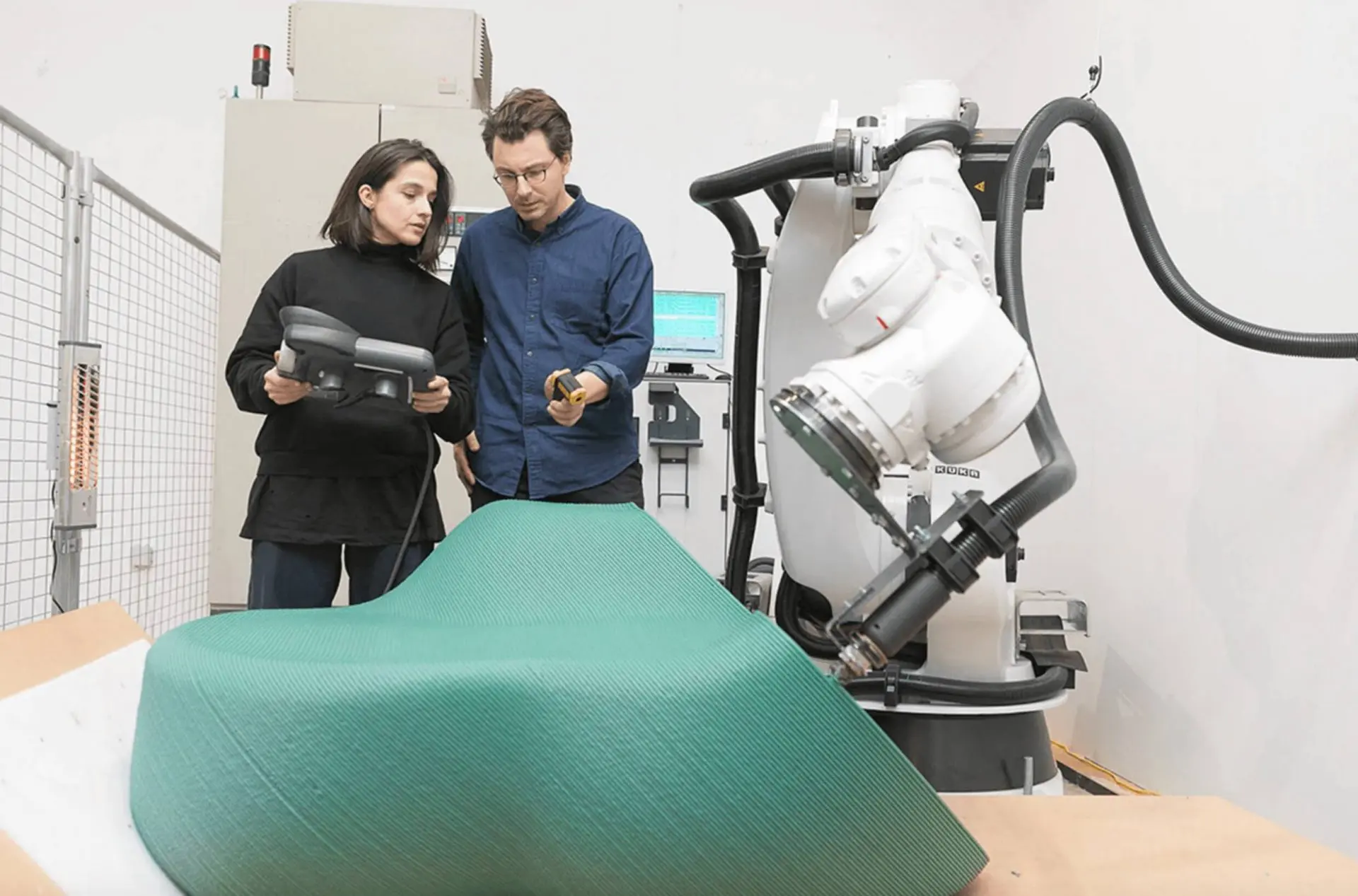
Materials & Techniques – 3D printed plastic waste
The main material used in Zero Waste Lab creations is plastic waste collected from the residents of Thessaloniki. Once collected, the plastic waste is shredded, washed, and processed in the recycling facilities on-site and then prepared to be print-ready material through the use of optimized robotic equipment.
Each furniture piece 3D printed in the Zero Waste Lab uses 100 kg of plastic waste and takes about 12 hours to be printed. Residents are able to bring all of their plastic waste, learn about the recycling process of plastic, understand the benefits of a circular economy, and have the opportunity of designing new furniture for their neighborhoods all in one place.
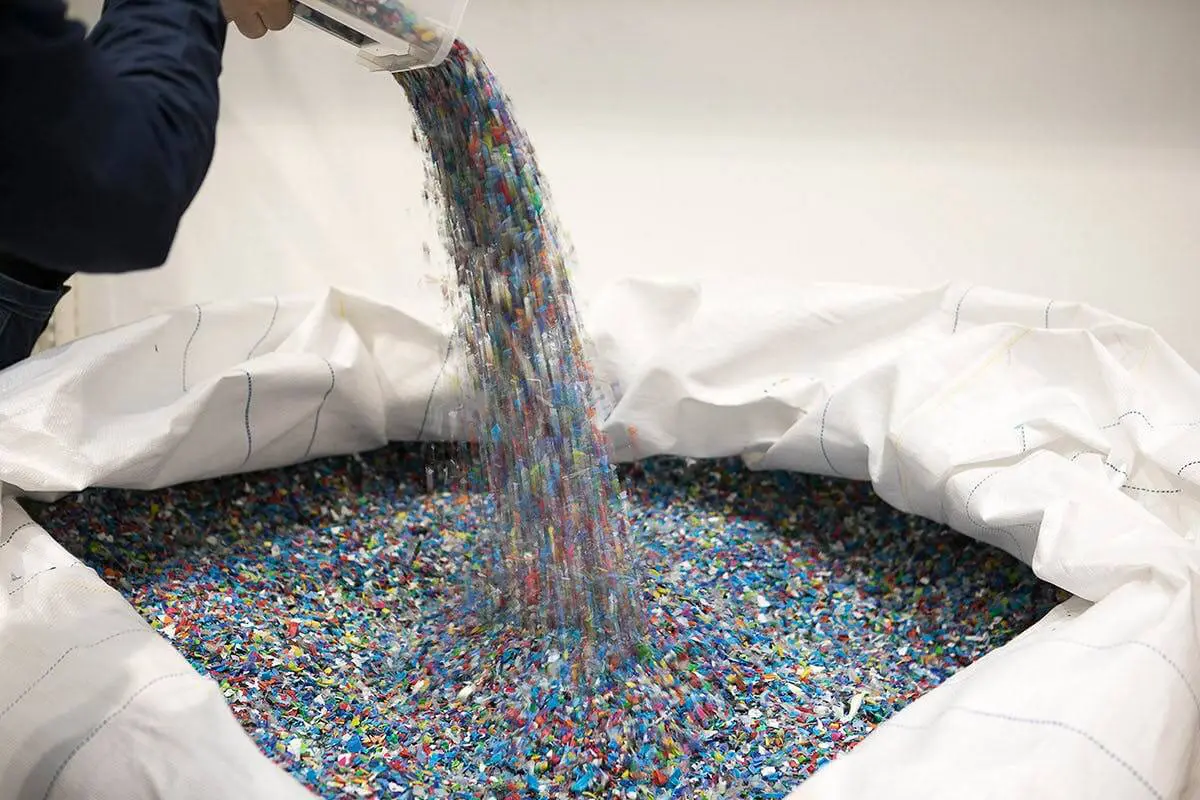
Style & Aesthetics – Simple, monochromatic, and ergonomic
Zero Waste Lab 3D printed products have a simple, monochromatic, yet ergonomic design. Each design is well-thought-out and includes surprising combinations such as spaces in the furniture to add plants and give each piece a unique personality.
The simplicity of the design allows for every 3D printed product to be perfectly blendable and adaptable to any setting while giving a chance to personalize it as desired.

Zero Waste Lab is a place for creation and education
Zero Waste Lab is open to the public 4 days a week. It allows locals to familiarize themselves with the plastic recycling process, deposit their plastic waste, and submit new furniture ideas for their neighborhood.
Residents have the opportunity to choose which public space will be 3D printed, the shape, its color, and any other features. Some of the products available include bike racks, flower pots, benches, and other innovative and environmentally friendly designs.
Because of the use of plastic waste as the main material, all of Zero Waste Lab 3D printed products can still be recycled if broken. Damaged products can go through the recycling process and be 3D printed again up to 7 times, making the whole initiative even more sustainable.
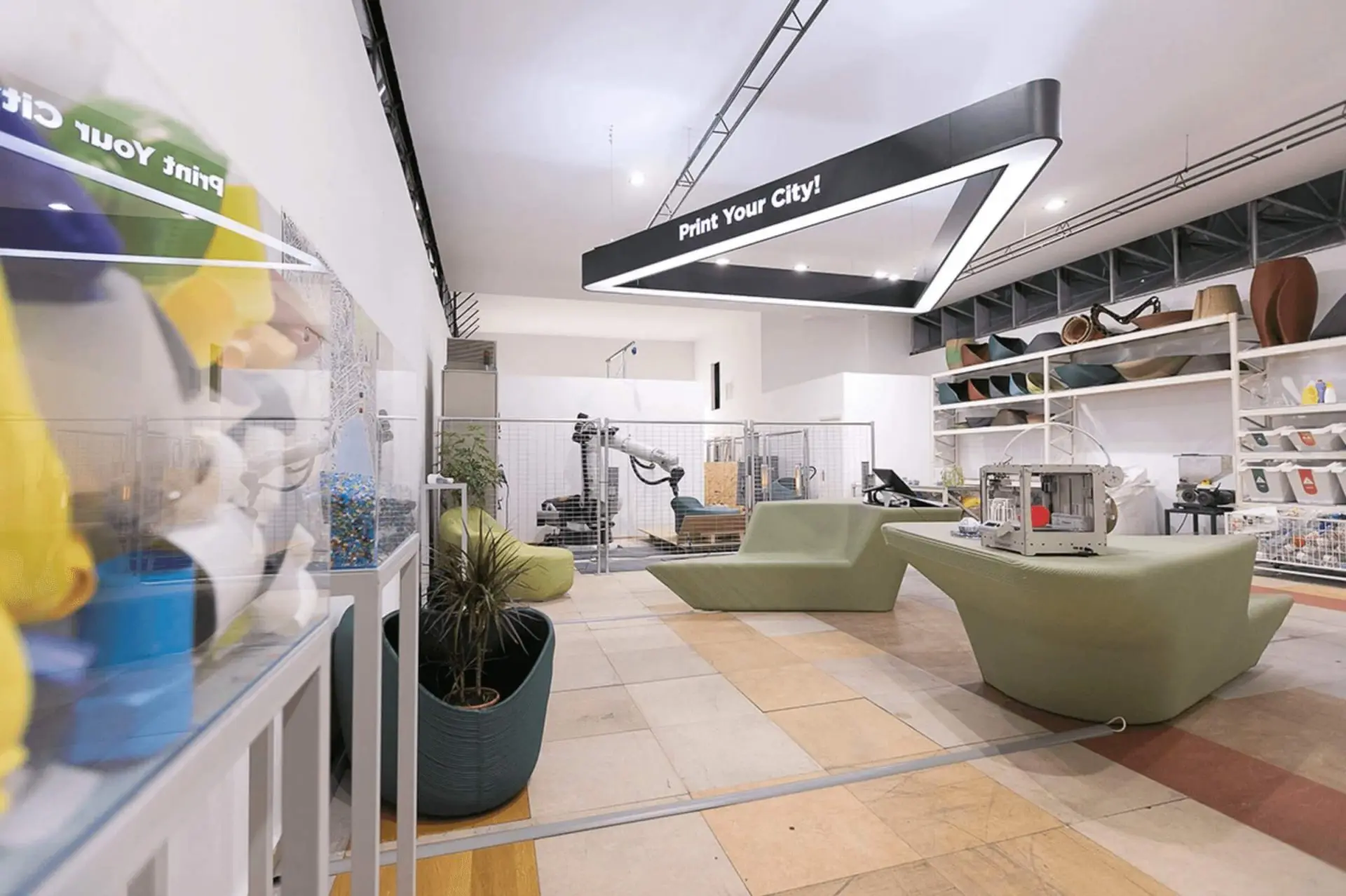
Design Memento – This initiative showcases the power designers have to make a circular economy visible and feasible
Because of the structure of the Zero Waste Lab initiative, citizens are involved and actively participating through their contribution of raw material (plastic waste) and creatively by designing their city.
This type of synergy allows for a clear circular economy that benefits every stakeholder, showcasing the ability of designers to contribute to society not only through beautiful products but through a feasible and well-rounded economical structure.
The writer’s comment – Imagine a future where residents can use their own waste to change their city
Everybody should know that plastic is a valuable material, it is designed to last forever and has many capabilities, but somehow we just use it for very short periods of time before we dispose of it, making it highly harmful as well. Luckily, initiatives such as Zero Waste Lab can help us look at plastic in a different light and reshape it.

Zero Waste Lab started with a simple premise: start collecting plastic waste and transform it into raw material for large-scale 3D printing. THE NEW RAW managed to design a structure where citizens are involved in the production of furniture that enhances their public spaces, reduces their waste, and educates them towards a more sustainable future.



